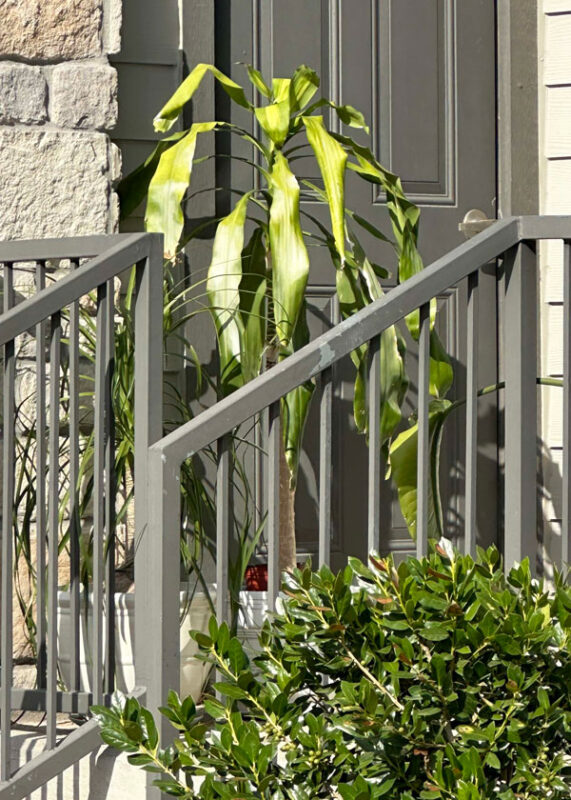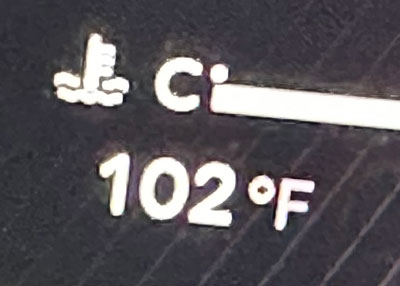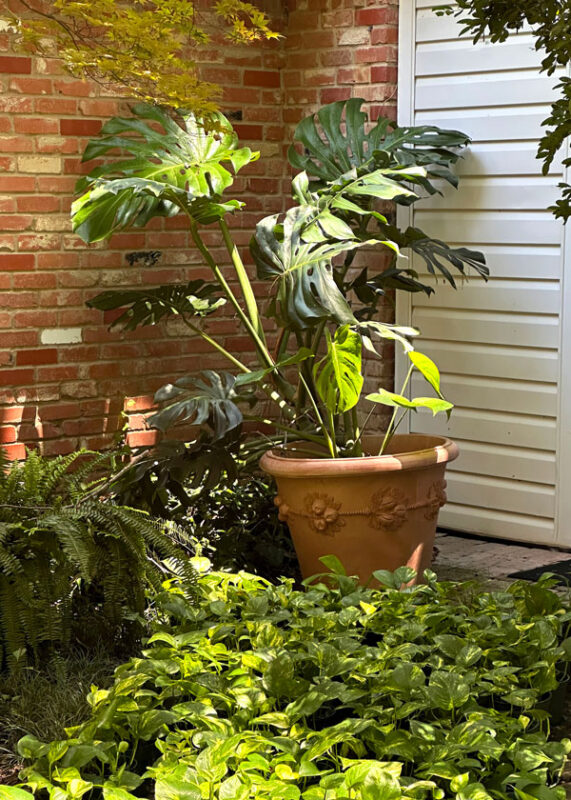Can you spell “acclimated?”
To a tropical houseplant that’s just spent 8 or 10 months of cloudy, cool winter and spring weather inside a house or apartment, perhaps with the lights turned down while the residents were away earning a living – to that plant that probably was collected from a dank equatorial jungle – getting set outside onto a porch or patio now is a trip to plant hell.


Getting set out into the hot afternoon summer sun here in Texas on a triple-digit day – few will survive. You can already see that poor plant fading to parchment. Just a few hours of this and it’ll be toast – probably by the time those folks got home from their air-conditioned office when I took the photo last week.
If you want to give your houseplants a summertime rehab, start it in spring, and do it gradually. Think about how fast you’d sunburn if you weren’t protected that first day on the beach. For some complexions it doesn’t matter if it’s first day or last, it’s always going to be a concern.
So, know your plants and where they call home. Make your changes in their surroundings slowly and carefully. In the fall, as you bring them indoors to darker surroundings, do the reverse. Let them adjust. Let them “acclimate” to less and less light before the first freeze arrives.

I offer the counter example from the Sperry home landscape. A grower friend gave me a young Monstera plant as he was retiring two years ago. It’s done famously in the same spot in our summertime landscape ever since. In the winters it sits beneath the heaters in my greenhouse, but in the summers it’s back out in this mostly shaded location. Yes, the trees block most of the direct sunlight, but there are several hours of sunlight that filter through each day. It’s good with that, as you can see. It started out in April, and it has adjusted.
I was in a doctor’s waiting room last week. I believe it might have been a new practice. It was my first time to see him. On the chair beside me were the last remains of a jade plant (Crassula). They need full or nearly full sunlight. It was quite dark in that office and all the plant’s leaves had dried and shriveled. That’s how a jade plant tells you it’s not happy with its lighting.
When we buy tender plants in the winter (poinsettias, for example) and carry them out of the store into freezing weather, that’s another short fuse. You have only a matter of seconds – certainly not minutes – before your plant will be ruined. Have the car warmed up and lay a lightweight piece of fabric over the plant as you run it out to protection.
And when you buy plants at the garden center, or when you move, don’t set them up in the back of a pickup and expose them to highway winds. You simply cannot drive slowly enough. You’ll burn all their leaves. I see so many peace lilies, rubber plants, and other once-lovely houseplants being blown to pieces as their owners whiz down the highway. Have mercy on your plants. Keep them inside the vehicle with you or at least wrap their tops in burlap or old sheets to keep the wind from whipping them.
